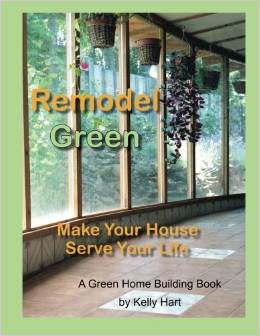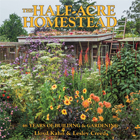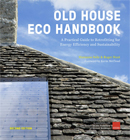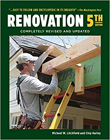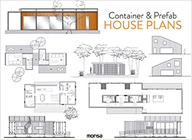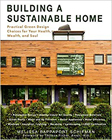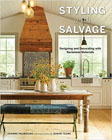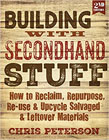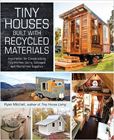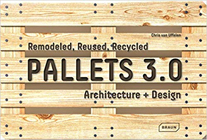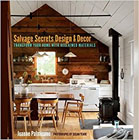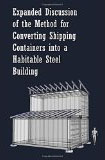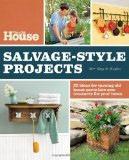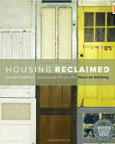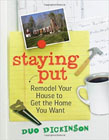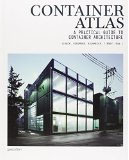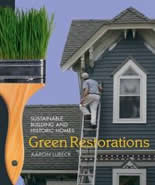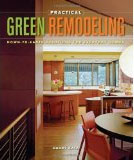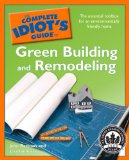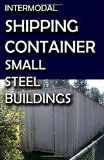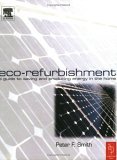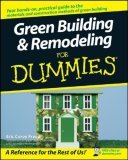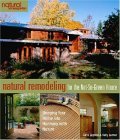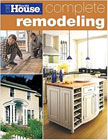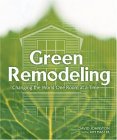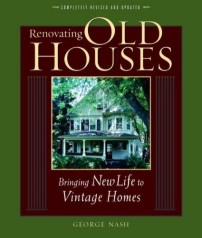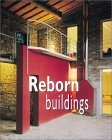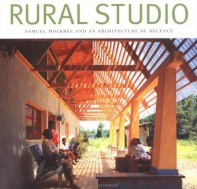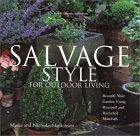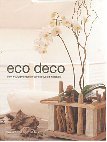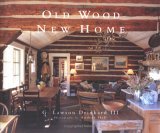Recycle Materials
It is satisfying, fun and economical to reuse old building materials. In our society there has been a stigma attached to "used" stuff. We value "new" above all else, or at least the advertising forces would have us believe that. Antiques, of course, have acquired their own cachet and their value is hyped, primarily because of rarity. It's that middle ground of stuff that isn't new and hasn't acquired the status of being "antique" that I would like to focus on here.
The local dump is a great place to look for such stuff because it is often perceived as valueless. Our local dump actually has an area set aside for potentially reusable items, and they encourage people to sort through it. We found our kitchen sink there, in perfectly good condition, except for a little chip in the corner that I covered with tile. The virtue of recycling used building materials lies in diminishing the need for industry to recreate it. All of the energy that is spent in manufacturing and transporting something can be saved. The raw materials that would be drawn from the earth can be saved. The need to cover the item in the local landfill can be saved.
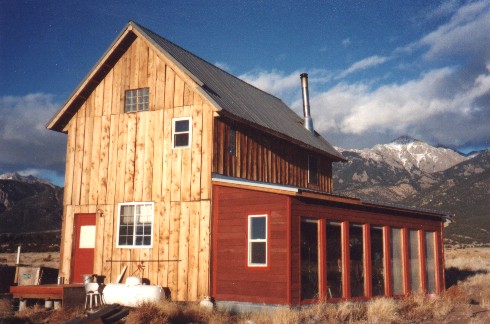 The value of recycling building materials, or anything else for that
matter, is that the cost is likely to be a fraction of the same thing
in the "new" category. The savings can be substantial. Take the case of
Lonny Roth's house that he built in our neighborhood. It is a very
nice looking house of about 1,200 square feet. Lonny tells me that about
three quarters of all the materials used to build the house have been
recycled. He estimates that the cost of the house when it is finished
will be right around $20,000. About half of the materials for Lonny's
house were pulled from dumpsters at construction sites. Much of the framing
and sheathing materials were found this way. Also many of the doors, windows,
sinks, plumbing parts and appliances were used.
The value of recycling building materials, or anything else for that
matter, is that the cost is likely to be a fraction of the same thing
in the "new" category. The savings can be substantial. Take the case of
Lonny Roth's house that he built in our neighborhood. It is a very
nice looking house of about 1,200 square feet. Lonny tells me that about
three quarters of all the materials used to build the house have been
recycled. He estimates that the cost of the house when it is finished
will be right around $20,000. About half of the materials for Lonny's
house were pulled from dumpsters at construction sites. Much of the framing
and sheathing materials were found this way. Also many of the doors, windows,
sinks, plumbing parts and appliances were used.
Another approach to recycling is to take an existing container and incorporate it into the structure of the house. I've seen this done with water towers, wine vats, silos, cabooses and box cars, and shipping containsers.
 In our earthbag house we used lots of old metal wagon wheels and culvert
couplers to create circular supports for windows. We had to scrounge a
bit for the wheels because they seem to be popular for yard ornaments.
We also used a few truckloads of trash paper making the papercrete to
cover the earthbags. The polypropylene bags themselves are recycled misprinted
rice bags. Some of the lumber used to frame the solar roof was salvaged
from a local barn.
In our earthbag house we used lots of old metal wagon wheels and culvert
couplers to create circular supports for windows. We had to scrounge a
bit for the wheels because they seem to be popular for yard ornaments.
We also used a few truckloads of trash paper making the papercrete to
cover the earthbags. The polypropylene bags themselves are recycled misprinted
rice bags. Some of the lumber used to frame the solar roof was salvaged
from a local barn.
There is a good chance that old wood (if it has been kept dry) is better that what can be purchased as new lumber. This is true for two reasons. First, it has had a chance to cure; new lumber is often green lumber. Secondly, the trees that supplied the lumber in the first place were likely larger in girth, and therefore the wood has fewer knots and is less likely to twist and warp.
Many localities have places that collect and resell recycled building materials. They might accept and sell such materials as wood, flooring, doors, windows, electrical supplies, ducting, hardware, plumbing, insulation, cabinets, fencing and landscaping. So I suggest that before you go off to the store to buy something new for your house, you might check the used section of the classified ads, second hand stores, salvage yards, the dump, or your neighbor's garage sale. Rather than stimulate more industrial activity, why not utilize something that is looking for a home?
Click on image to buy from CreateSpace.com |
Remodel Green: Make Your House Serve Your Life, a Green Home Building Book by Kelly Hart, 2014. To renovate a home is one of the ultimate ways of recycling, taking an existing structure and using it as a basis for creating just what you need. Over the course of the author's life he has engaged in numerous remodeling projects, as a professional carpenter, as a home owner, and as a renter. He draws on this experience as he explores with you what he considers to be the main principles that should guide you in your choices for your own green remodeling project.
The chapters include fitting your house to your needs, the basics of passive solar design, tips on keeping your house cool, options to power your house with renewable energy, ways to conserve water, employing local, natural and recycled materials, the value of cultivating vegetables, how to naturally store the produce that you grow, and why to consider sharing some facilities with others for economy and sustainability.
Click on image to buy from CreateSpace.com |
Rolling Shelter: Vehicles We Have Called Home Are you interested in RV living? Rolling Shelter is a personal account of Kelly and Rosana Hart's life in two different buses, three vans, two small motor homes, two travel trailers combined into one house, and two cars. Kelly tells stories about how they spent time exploring the western United States, Mexico and Guatemala, all the while living in various RV's. This book will inspire you and give you some ideas for how you might take advantage of vehicles to provide shelter in your life. In full color, the book features over 200 photographs and 5 detailed floor plans. With descriptions of how the conversions were accomplished, it is valuable both as an overview of vehicular dwelling and as a construction manual for how you might convert your own.
Bus Conversion Magazine has been in existance for over 20 years. Each monthly issue has detailed "how-to" articles related to converting buses into motor homes. There are also articles about the safe use and maintenance of buses, as well as tips for buying, selling and traveling in them. And there is a classified section for finding buses and bus conversion parts.
The books shown below are arranged according to when they were published, with the most recent ones at the top. If you click on one of the images you will be taken to a page at Amazon.com where you can find out more about the book. If you end up buying one of them, greenhomebuilding.com will receive a small commission that will help cover the cost of maintaining this website. Thanks for your patronage.
Plans
Packaged Earthship
Michael Reynolds, Designer
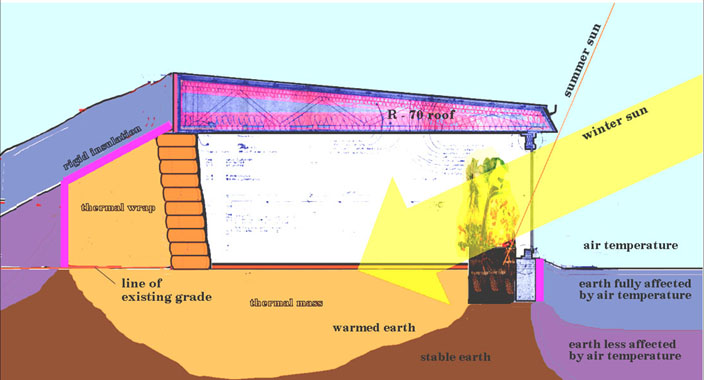
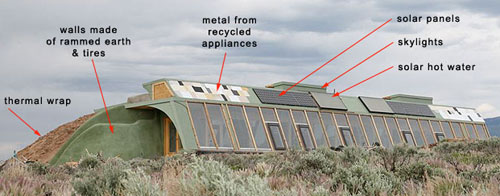 This 2 bedroom, 1 bath, 1118 sf Packaged Earthship design demonstrates passive solar heating, solar energy collection through photovoltaics, water catchment, and sewage treatment. The width of each room is flexible, as is the length of the entire shell. Each Earthship includes an interior planter which allows the resident to use fresh water at sinks and shower, send it through the interior grey water planter to feed the plants which in turn clean the grey water as well as produce oxygen, flowers and sometimes food, then the remaining water can be used to flush the toilet. The black water from the toilet is sent outside to a conventional septic tank and then into a contained drainfield where the moisture provides landscaping. The load bearing walls in the home have been built by ramming earth into used automobile tires. Interior walls are built using recycled cans.
This 2 bedroom, 1 bath, 1118 sf Packaged Earthship design demonstrates passive solar heating, solar energy collection through photovoltaics, water catchment, and sewage treatment. The width of each room is flexible, as is the length of the entire shell. Each Earthship includes an interior planter which allows the resident to use fresh water at sinks and shower, send it through the interior grey water planter to feed the plants which in turn clean the grey water as well as produce oxygen, flowers and sometimes food, then the remaining water can be used to flush the toilet. The black water from the toilet is sent outside to a conventional septic tank and then into a contained drainfield where the moisture provides landscaping. The load bearing walls in the home have been built by ramming earth into used automobile tires. Interior walls are built using recycled cans.
For more information about this plan, and many others, visit our sister site www.dreamgreenhomes.com, where you will find a wide range of plans for sustainable homes, greenhouses, small buildings, garages, and food storage space for sale. Dream Green Homes is a consortium of outstanding architects and designers, who have pooled their talent and expertise for your benefit.
Informative Links
General
consumerenergycenter.com good overview of passive solar concepts.
New Mexico Solar Energy Association description of passive solar concepts.
homeadvisor.com describes eco-friendly ways to dispose of home renovation debris.
personalcreations.com lists over 200 household items that can be recycled with suggestions for how to go about it.
meblefurniture.com 7 Creative Ways to Recycle Furniture
industrialmetalservice.com A Complelte Guide to Scrap Metal Recylcling
Stores and Outlets
habitat.org/env/restores Habitat for Humanity ReStores sell recycled building materials.
buildingresources.org Recycled building resources in the San Francisco Bay Area.
thereusepeople.org Buys and sells used building materials in Oakland, CA, Boulder, CO and Seattle,WA.
oldwoodworkshop.com sells reclaimed lumber and architectural features.
frtirerecycle.com this company sells huge bales of recycled tires that have been used for various building projects.
wholeloglumber.com sells a range of recycled wood flooring materials from North Carolina.
oldewoodltd.com features reclaimed wide plank flooring and antique hand-hewn timber.
Directories
recycle.net worldwide recycling directory.
Deconstruction
nytimes.com an article, titled "This Old Recyclable House" weighs the pros and cons of the modern deconstuction industry.
TheBarnPages.com You can buy and sell used barns all over the U.S. from this site.
reuseconsulting.com is a blog-style site about the deconstruction industry.
mesothelioma.net describes how to safely deal with asbestos when deconstructing houses.
Container Buildings
cnn.com an article with embedded video and photos about shipping copntainer homes.
Products
earthstonetechnology.com takes recycled glass bottles and turns them into a variety of useful products.
AppliancePartsPros.com carries thousands of parts for all sorts of appliannces and features part photos, diagrams, and live help.
ignagroup.com manufacture blocks and pavers from lignastone and timbercrete made with timber waste products.
stonecycling.com Creating building materials from 100% upcycled waste, with a positive carbon impact on our planet.
www.stonecycling.com msnufctures a variety of bricks from recycled materials.
Houses from Recycled Material
krepcio.com/vitreosity a pictorial presentation of many lovely and amazing bottle construction projects/art.
paperhouserockport.com describes an entire house made mostly of old newspapers, furniture and all.
buildsimple.org describes how plastics and unwated agricultural waste can be baled for building walls.
trueactivist.com a nice article about how Nigerians are building homes with plasic bottles filled with earth.
purelivingforlife.com this blog is by a couple who are building an off-grid homestead, mostly from recycled materials.
Remodeling
buildinggreen.com an article about the importance of retrofitting existing homes for energy effciency.
raleighrealtyhomes.com A Room-by-Room Guide to Eco-Friendly Home Modifications and Renovations
Videos
youtube.com this video shows how some plastic bottles were used to create a wall.
youtube.com video about using recycled pop bottles for daylighting.

For Email contact go to About Us
Established in 2001, GreenHomeBuilding.com is primarily a labor of love. Kelly, and the GreenHomeBuilding team of experts, have answered thousands of questions for readers over the years, and we continue to publish up-to-date information about increasingly important sustainable architecture. If you feel moved to assist us in this work, your kind donation would be much appreciated; this can be easily done through our PayPal account:

VISIT OUR OTHER WEBSITES:
[Natural Building Blog] [Earthbag Building] [Dream Green Homes]
Disclaimer Of Liability And Warranty
I specifically disclaim any warranty, either expressed or implied, concerning the information on these pages. Neither I nor any of the advisor/consultants associated with this site will have liability for loss, damage, or injury, resulting from the use of any information found on this, or any other page at this site. Kelly Hart, Hartworks LLC.



